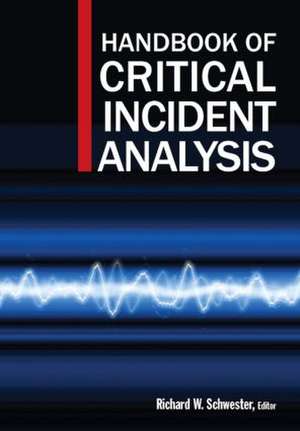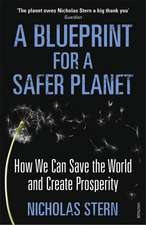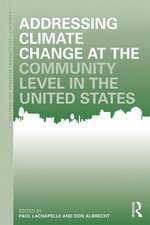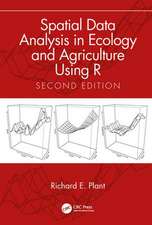Handbook of Critical Incident Analysis
Autor Richard W. Schwesteren Limba Engleză Hardback – 15 mar 2012
This groundbreaking book develops a new organizational theory derived from ideas in statistics and psychometrics. The author's core premise is that errors known to occur in social science research must also occur when managers look at their data and seek to make inferences about cause and effect. Statistico-organizational theory uses methodological principles to predict when errors occur and how great they will be. Expanding on this concept, The Meta-Analytic Organization offers new theoretical propositions about organizational strategy and structure with wide application to human resource management, international business, and more.
Preț: 878.42 lei
Preț vechi: 1217.51 lei
-28% Nou
Puncte Express: 1318
Preț estimativ în valută:
168.08€ • 175.51$ • 138.80£
168.08€ • 175.51$ • 138.80£
Carte tipărită la comandă
Livrare economică 15-29 aprilie
Preluare comenzi: 021 569.72.76
Specificații
ISBN-13: 9780765627247
ISBN-10: 0765627248
Pagini: 384
Ilustrații: Illustrations
Dimensiuni: 152 x 229 x 27 mm
Greutate: 0.61 kg
Ediția:1
Editura: Taylor & Francis
Colecția Routledge
Locul publicării:Oxford, United Kingdom
ISBN-10: 0765627248
Pagini: 384
Ilustrații: Illustrations
Dimensiuni: 152 x 229 x 27 mm
Greutate: 0.61 kg
Ediția:1
Editura: Taylor & Francis
Colecția Routledge
Locul publicării:Oxford, United Kingdom
Cuprins
Introduction, PART I. UNDERSTANDING THE FIELD OF CRITICAL INCIDENT ANALYSIS, 1. The Emergence of Critical Incident Analysis as a Field of Study, 2. A Conceptual Model for Critical Incident Analysis, 3. Conceptualizing and Defining Critical Incidents, PART II. DISCIPLINARY AND POLICY PERSPECTIVES IN CRITICAL INCIDENT ANALYSIS, 4. Critical Incident Analysis, Biological Events, and the Case of the 2009 H1N1 Influenza A Pandemic, 5. Space, Sentiment, and Social Structure after Critical Incidents: Toward a Theory of Recovery, 6. Modeling Critical Incidents to Improve Response, 7. Predicting Critical Incidents, 8. Praxis, Applications, and Problems: Data Mining for Critical Incident Analysis, 9. Can Catastrophes Lead to Good Policy?, 10. Living with Disasters: A Planning Approach to Critical Incidents, 11. Disaster Investigations: A 9/11 Case Study, PART III. ISSUES IN CRITICAL INCIDENT ANALYSIS MANAGEMENT, 12. The Critical Role of Street-Level Bureaucrats in Disaster and Crisis Response, 13. An Earthquake Mitigation Process: A Case Study of Qinglong County’s Pre-Incident Predictions, Preparation, and Mitigation Actions, 14. Jokela and Kauhajoki: Experiencing School Shootings in a Nordic Welfare Society, 15. Critical Incident Trauma Intervention: A Sense of Coherence Approach to Psychological First Aid with Student Survivors, 16. The Use of a Multi-Attribute Method to Analyze Preparedness for an Incident of Terrorism, 17. Improved Policing in an Invisible Community: A Case Study of the Gay and Lesbian Liaison Unit of Washington, DC, 18. The Dynamics of Critical Incidents in the Age of New Media: Examining the Role of the Self-Appointed or Media-Anointed Expert, 19. Ethical Challenges Inherent in Critical Incident Dynamics, About the Editor and Contributors, Name Index, Subject Index
Notă biografică
Richard W. Schwester, PhD, is associate professor of Public Management at John Jay College of Criminal Justice (CUNY), where he holds a BA from Johns Hopkins University and an MA and PhD from Rutgers University. His research centers on the use of technology in government, inter-local shared services, and police and emergency service delivery models. Some of Dr. Schwester’s most recent work appears in Public Budgeting and Finance, Public Performance and Management Review, Public Administration Quarterly, International Journal of Public Administration, International Review of Public Administration, and the International Journal of Organization Theory and Behavior. He is also the co-author of Public Administration: An Introduction. Dr. Schwester serves as associate director of the Academy for Critical Incident Analysis (ACIA) at John Jay.
Descriere
Critical incidents all too often explode onto the social conscious and challenge our sense of security.






















